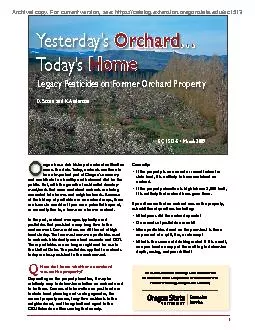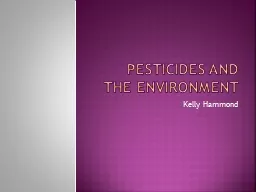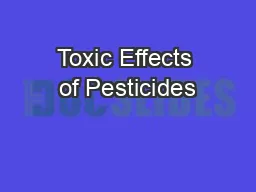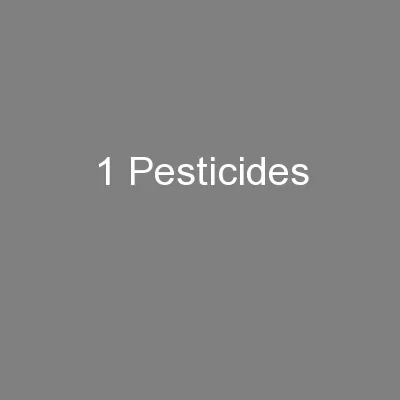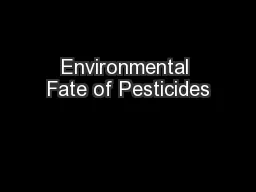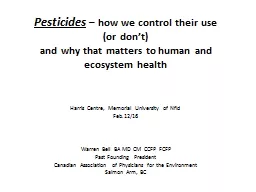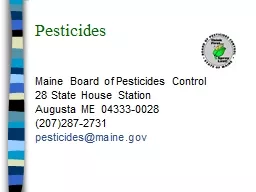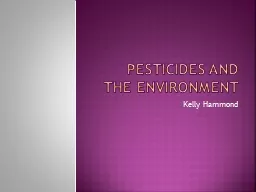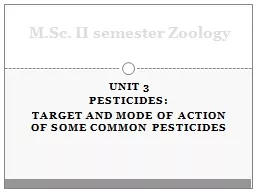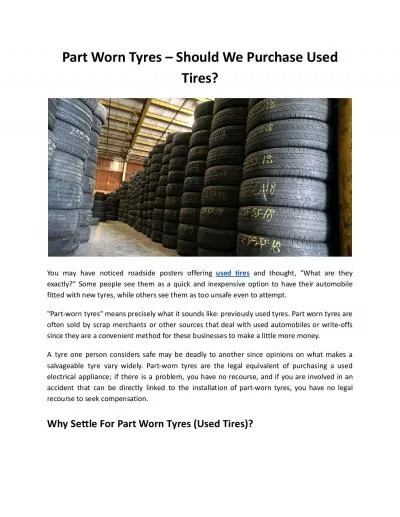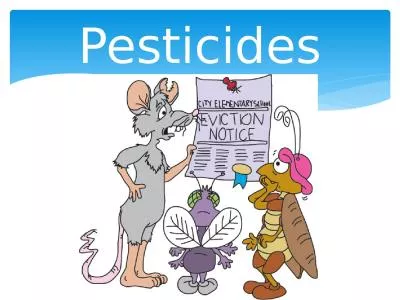PDF-What pesticides were commonly used in orchards?If the property conta
Author : tatyana-admore | Published Date : 2015-12-10
Figure 1 Movement of chemicals in the environm The sampling technique is the most important step in any laboratory analysis Sampling location also is important Drainage
Presentation Embed Code
Download Presentation
Download Presentation The PPT/PDF document "What pesticides were commonly used in ..." is the property of its rightful owner. Permission is granted to download and print the materials on this website for personal, non-commercial use only, and to display it on your personal computer provided you do not modify the materials and that you retain all copyright notices contained in the materials. By downloading content from our website, you accept the terms of this agreement.
What pesticides were commonly used in orchards?If the property conta: Transcript
Download Rules Of Document
"What pesticides were commonly used in orchards?If the property conta"The content belongs to its owner. You may download and print it for personal use, without modification, and keep all copyright notices. By downloading, you agree to these terms.
Related Documents

